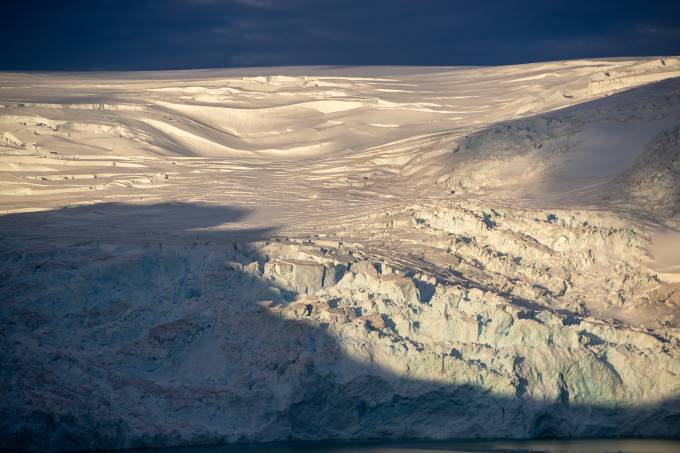The river under the Antarctic ice sheet favors the loss of the ice sheet
3 min read
460 km long river under the ice cap of Antarctica It can affect the flow of water and the speed of ice melt due to global warming. The conclusion is part of a study signed by researchers from Imperial College London, University of Waterloo, Canada, Malaysia’s University of Terengganu, and the University of Newcastle, and published this Thursday, 27, in the journal. natural earth sciences.
The area on which this study is based has enough ice to raise global sea levels by 4.3 million. How much this ice melts and how quickly it melts depends on how much the ice base is sliding. The newly discovered river system can severely influence this process.
“When we discovered lakes under Antarctica’s ice a few decades ago, we thought they were isolated from each other,” said Professor Martin Siegert of Imperial College London, co-author of the study. “Now we are beginning to understand that there are whole systems out there, interconnected by vast river networks, just as they could be if there weren’t thousands of meters of ice above them.
The river collects water at the base of the Antarctic ice cap, an area the size of Germany and France combined. The discovery was made through a combination of radar surveys that allow researchers to peek into what lies beneath the ice and model the hydrology of the mantle. The team focused on an inaccessible and out of the way area up to the Weddell Sea.
“From satellite measurements, we know which areas of Antarctica are losing ice and how much, but we don’t necessarily know why,” says Kristin Dow of the University of Waterloo, who led the research. “This finding may be a missing link in our models. We can greatly underestimate how quickly a system is melting by not taking into account the impact of these river systems.”
The newly discovered river appears at sea under a floating ice shelf. However, the fresh water from the river moves the warm water towards the bottom of the ice shelf, melting it from below.
Previous studies looked at the interaction between the edges of the ice sheets and ocean water to determine the shape of the melt. However, the discovery of a river hundreds of kilometers inland and carrying out some of these processes shows that it is not possible to fully understand the melting of ice without looking at the entire system: the ice sheet, the oceans, and the fresh water.
The presence of large rivers under the ice should also be taken into account when forecasting the possible consequences of climate change in the region. If the summer is hot enough to cause the surface to melt so that water reaches the base of the ice sheet, this could have significant effects on river systems, potentially pushing Antarctica into a Greenland-like state where ice loss is much faster.
High quality and reliable information, just one click away. Subscribe see.

“Entrepreneur. Music enthusiast. Lifelong communicator. General coffee aficionado. Internet scholar.”

:strip_icc()/s04.video.glbimg.com/x720/11792055.jpg)

:strip_icc()/s03.video.glbimg.com/x720/11786998.jpg)



